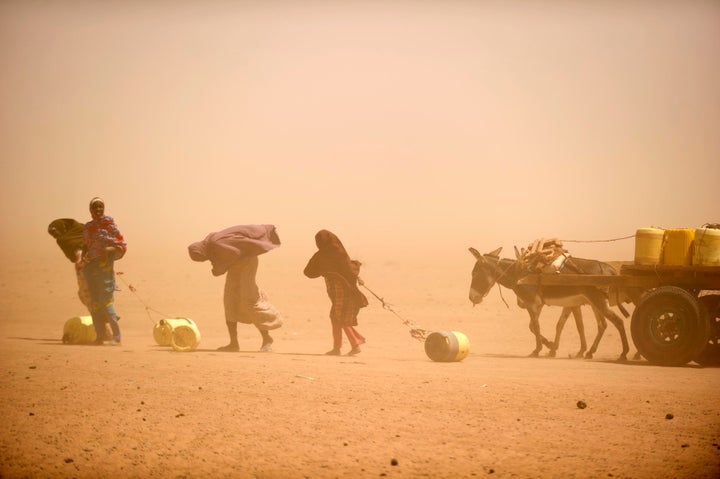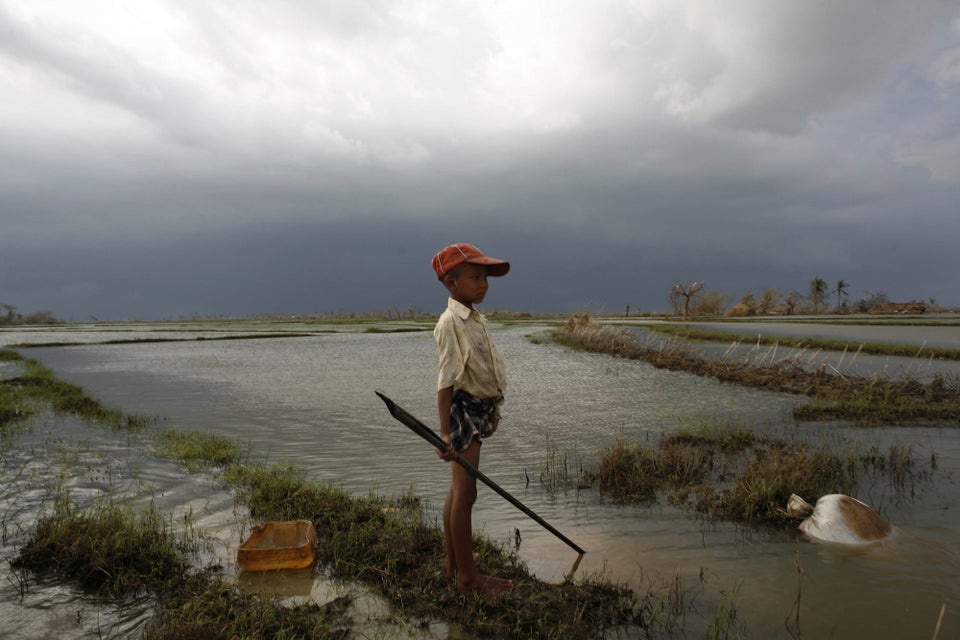
COPENHAGEN (Thomson Reuters Foundation) - Carla Lopez remembers the first time she heard a suggestion that climate change was a factor leading to the rape of young girls.
"I was in Santa Maria Xalapan of Guatemala when a group of women said young girls were being kidnapped and raped because there was a water crisis. It was a revelation," said the executive director of the Fondo Centroamericano de Mujeres, a women's fund based in Central America.
In the indigenous Xinca society of Xalapan, men often kidnap and rape young girls before marrying them, Lopez said, and for about a decade, the local women's group had been campaigning to end this trend.
But in the last two years, groundwater was becoming scarce, because of weather changes and increased mining in the region. As women and girls had to walk further to fetch water, the number of kidnappings and rapes more than doubled over that period, local women said.
"The group of young women came to us and said that they were going to campaign for women's and girls' access to water, because that was the main reason behind the rise in rapes and kidnapping. So we provided them a grant of $15,000 that was usually reserved for climate projects," said Lopez, who spoke at this week's Women Deliver conference in Copenhagen, which for the first time had a strong focus on climate change issues this year.
Globally, a growing number of women’s organizations are beginning to draw connections to climate change in their work, said Juliana Valez of the Women's Environment and Development Organization (WEDO), a global network of over 100 women's organizations working on climate change and women's issues.
That is both because organizations increasingly see how issues such as worsening disasters, increasing migration or lack of water disproportionately affect women, and because many organizations have their eye on a share of a promised $100 billion a year in international funding to address climate change by 2020, experts said.
LOOKING AT THE ROOT CAUSES
In the past two to three years, Valez said, about a quarter of their partners have begun to address climate change in their work, including some large organizations such as the Asian Pacific Resource and Research Centre for Women in Malaysia, Population Action Integration in Washington and the Fondacion Cayetano Heredia, a health research organization in Peru.
"From security issues such as rape, beating and molestation to health issues such as miscarriages and hemorrhage or early deaths of mothers, women organizations are beginning to look more at the root cause and finding climate change as the root cause, or a cause worsening the situation," she said.
That has led to a growing number of funding organizations giving cash not just to address threats to women, but also to focus on the climate change issues underlying them.
But getting climate cash for women’s issues– and vice versa – isn’t always easy, said Laura Garcia of the Sociedad Mexicana pro Derechos de la Mujer (SEMILLAS), one of the organizations which gives such linked-up grants.
"We have a simple but strict criterion: you must have project with a human rights approach, a clear gender perspective, that has women at the lead and can lead to gender equality. But, most of the proposals that we receive fail to incorporate all of these,” said Garcia, of the Mexico-based group.
Women's concerns also are getting a limited focus in efforts to curb climate change, experts said. Statistics from the Global Environment Facility (GEF) suggest that of the total project proposals on curbing climate change submitted to the GEF in 2014, only 18 percent addressed gender issues.
Lopez doesn’t think the effort to link up threats to women and threats to the climate is simply an "attempt to grab the money" that is becoming available to deal with climate change.
Women’s organizations "are shifting to climate change because they see the reason as genuine, not because that is where the money is", she said.
MAKING THE LINK
The problem facing many women's groups in securing funding, she said, is that many do not know how to describe clearly the climate connection to their project – even though the links are there.
Efforts to build the capacity of women’s groups to seek climate finance will be important, Lopez and Garcia said. They urged the international Green Climate Fund – which is expected to handle a large share of the coming flow of climate cash – to work closely with regional "green" grant giving organizations.
"Local funders have the access to the local organizations, and understand their needs, their vulnerabilities, and a framework for releasing the finances. So a partnership with them can not only be logical, but also beneficial to all," Garcia said.
(Reporting by Stella Paul; editing by Laurie Goering :; Please credit the Thomson Reuters Foundation, the charitable arm of Thomson Reuters, that covers humanitarian news, climate change, women's rights, trafficking and property rights. Visit http://news.trust.org/climate)
